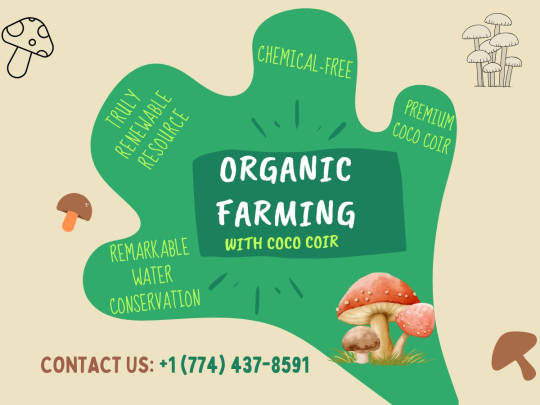#renewableresource
Explore tagged Tumblr posts
Text
Solar Panels Energy Transformation - How Sunlight Becomes Electricity

Solar Panels Energy Transformation: How Solar Panels Work The phrase solar panels energy transformation refers to the fascinating process of converting sunlight into usable electricity. It’s a marvel of modern technology, but understanding it can seem complex. Are you curious about how sunlight powers homes and businesses? Let’s break it down simply and clearly. What Problem Do Solar Panels Solve? Energy demand is skyrocketing, and traditional fossil fuels are both limited and harmful to the environment. Solar energy provides a sustainable, eco-friendly alternative. However, many wonder: how does sunlight turn into the electricity that powers our devices? This guide explains the step-by-step transformation, highlighting the science and technology behind it.

H2: What Is Solar Energy Transformation? Solar energy transformation is the process of converting photons from sunlight into electrical energy through photovoltaic (PV) technology. Solar panels, made up of numerous solar cells, are the heart of this process. Step-by-Step Process of Solar Panels Energy Transformation Capturing Sunlight Through Photovoltaic Cells Solar panels contain photovoltaic cells made from semiconductors, typically silicon. When sunlight hits the panel, photons excite the electrons in the semiconductor material, creating an electric current. This phenomenon is called the photoelectric effect. Creating an Electric Field Each solar cell is designed with two layers: one positively charged and one negatively charged. This setup creates an electric field, forcing the excited electrons to move, generating a flow of electricity. Direct Current (DC) to Alternating Current (AC) Conversion The electricity generated by the solar cells is in direct current (DC) form. An inverter is used to convert DC to alternating current (AC), which is the standard electricity type for powering homes and businesses. Powering Your Home or Sending Energy to the Grid Once the energy is converted to AC, it can power your appliances or be stored in batteries for later use. Any excess electricity can be sent to the grid, often earning homeowners credits through net metering. Benefits of Solar Panels Energy Transformation - Renewable Resource: Solar power harnesses an unlimited energy source—the sun. - Eco-Friendly: No harmful emissions or pollutants are released. - Cost Savings: Lower electricity bills and potential earnings from excess energy production. - Energy Independence: Reduce reliance on traditional utilities. Frequently Asked Questions About Solar Energy Transformation How Efficient Are Solar Panels? Modern solar panels can convert around 15-22% of sunlight into electricity. Efficiency depends on factors like location, panel quality, and weather conditions. Can Solar Panels Work on Cloudy Days? Yes, though their efficiency decreases. Panels still generate electricity from diffuse sunlight, but production will be lower than on sunny days. What Happens to Solar Panels at Night? At night, when sunlight isn’t available, energy stored in batteries or sourced from the grid is used to meet electricity needs. Solar Panels Energy Transformation - Solar Energy Here to Stay The transformation of solar energy into electricity is paving the way for a sustainable future. With advancements in technology, solar panels are becoming more efficient, affordable, and accessible. By understanding this process, you can make informed decisions about embracing solar energy for your home or business. Ready to learn more about the benefits of solar energy? Explore installation guides, financial incentives, technology trends, and Solar Gadgets today. Read the full article
#eco-friendly#energyindependence#photoelectriceffect.#renewableresource#solarcellefficiency#solarcells#solarpanels#SolarPanelsEnergyTransformation
0 notes
Text
Happy Paper Bag Day! 🛍️
Celebrate Paper Bag Day by appreciating the eco-friendly paper bag! Embrace its role in reducing environmental impact. Choose paper over plastic, and enjoy its versatility for a greener planet.
Every year on July 12th, we celebrate Paper Bag Day, a day dedicated to recognizing and appreciating the humble yet mighty paper bag. This eco-friendly alternative to plastic bags plays a significant role in our efforts to reduce environmental impact and promote sustainability. On Paper Bag Day, we honor the practicality and recyclability of paper bags and encourage everyone to make greener…
#Biodegradable#CircularEconomy#EcoConsciousLiving#EcoFriendly#EcoFriendlyPackaging#EnvironmentalAwareness#GoGreen#GreenLiving#LowerCarbonFootprint#PaperBagDay#PaperBags#PlasticFree#Recycle#ReduceWaste#RenewableResource#ReusableBags#Sustainability#SustainableChoices#SustainableLiving#ZeroWaste
0 notes
Text

#CocopeatBricks#Gardening#Horticulture#EcoFriendly#Organic#SoilSubstitute#SoilConditioner#PeatMossSubstitute#WaterRetention#Drainage#RootPenetration#Biodegradable#RenewableResource#WaterUptake#Aeration#FertilizerEfficiency#WeedFree#PathogenFree#SustainableGardening
0 notes
Photo

Air Liquide and Sasol Sign Long-Term Contracts for Renewable Energy Supply | CeBoz.com
Air Liquide and Sasol have signed new Power Purchase Agreements (PPAs) with Enel Green Power RSA for the long-term supply of an additional capacity of 110 MW of renewable power to Sasol’s Secunda site in South Africa.
0 notes
Text

🌱📊 From Farm to Fuel Tank: Biodiesel's Economic Impact! 💪💼 Explore how this renewable resource is fueling business growth, driving innovation, and securing our future.
0 notes
Text
Hydropower Energy

Harnessing Water for a Sustainable Future In this article of Savings UK Ltd, we explore the ongoing global transition toward cleaner and more sustainable energy systems, hydropower stands out as one of the oldest and most reliable forms of renewable energy. For centuries, societies have harnessed the power of water to drive mechanical processes, and in modern times, hydropower has evolved into a crucial contributor to large-scale electricity generation. From towering dams on mighty rivers to small-scale run-of-the-river systems, hydropower plays a vital role in reducing dependency on fossil fuels, mitigating climate change, and supporting energy security. However, as with all energy sources, it comes with its own set of challenges—particularly concerning its environmental impact and effects on communities and ecosystems. #Dams #energygeneration #environmentalimpact #HydropowerEnergy #renewableresources #SAVINGSUKLtd #waterflow Read the full article
#Dams#energygeneration#environmentalimpact#HydropowerEnergy#renewableresources#SAVINGSUKLtd#waterflow
0 notes
Text
Bio-Wax Market insights shaping global sustainability trends in 2025

Bio-Wax Market is becoming a key indicator of sustainable industry transformation as global demand rises for eco-friendly alternatives in 2025. This shift is not just driven by environmental responsibility but also by changing regulations, consumer preferences, and technological advancements that support bio-based solutions across various industries.
Introduction to Bio-Wax and Its Growing Significance
Bio-wax is a plant-based or natural-origin wax that offers a renewable alternative to traditional petroleum-derived waxes. Typically derived from sources like soy, palm, beeswax, or sugarcane, bio-wax is biodegradable and environmentally safe. As industries move toward cleaner production and sustainable practices, bio-wax is emerging as a viable replacement in sectors like cosmetics, packaging, food coatings, and even automotive care.
In 2025, this transition aligns with a wider push for sustainability, as organizations and governments globally focus on reducing carbon emissions and plastic dependency.
Sustainability Trends Driving Bio-Wax Adoption
The bio-wax market is closely linked with some of the biggest sustainability trends of 2025:
Circular Economy Goals: Companies are aiming to close the loop with biodegradable packaging and renewable raw materials.
Green Consumerism: End-users are showing preference for products labeled natural, bio-based, or eco-friendly.
Corporate Sustainability Mandates: Firms are adopting ESG (Environmental, Social, Governance) frameworks that encourage bio-material integration.
Government Regulations: Policies in the EU, US, and Asia-Pacific are increasingly mandating reduced fossil-fuel reliance in industrial materials.
These drivers have positioned bio-wax not just as a substitute but as a strategic enabler of greener supply chains.
Industrial Usage and Demand Acceleration
Bio-wax finds increasing use in:
Cosmetics & Personal Care: Lip balms, lotions, and creams use bio-wax for natural emollient properties.
Packaging: Coatings for paper and cardboard rely on bio-wax for waterproofing and compostability.
Candles & Fragrances: Consumers prefer soy or palm wax candles for their cleaner burn and organic origin.
Automotive & Industrial Lubricants: Bio-wax is used for rust prevention and lubrication in environmentally sensitive operations.
In 2025, demand is strongest in North America and Europe due to early regulatory adoption, but Asia-Pacific is catching up quickly due to scalable production capabilities and growing domestic awareness.
Innovation and Technology Trends
Innovation is playing a major role in bio-wax market expansion:
Advanced Extraction Techniques: Technologies that improve yield from plant oils make production more efficient and cost-competitive.
Bioengineering: Genetically modified crops with higher wax yields are being explored to meet rising demand.
Custom Formulations: Blended waxes optimized for specific industrial or aesthetic use cases are being developed rapidly.
Low-Carbon Processing: Manufacturers are investing in production lines with minimal environmental footprints.
These technological developments are reducing the cost gap between bio-wax and petroleum wax, encouraging wider adoption.
Challenges Facing the Bio-Wax Market
Despite its promise, the market faces a few limitations:
High Production Costs: Raw material variability and small-scale production make bio-wax costlier than synthetic alternatives.
Supply Chain Constraints: Limited access to consistent quality feedstock can affect product uniformity.
Competition with Food Supply: Use of edible crops for wax production sometimes raises food security concerns.
Standardization Gaps: Lack of global standards makes product performance inconsistent across markets.
Tackling these challenges will be crucial for long-term scalability and mainstream industry integration.
Forecast for 2025 and Beyond
The bio-wax market is expected to continue growing steadily, supported by:
Increasing product launches with natural ingredients
Strong branding around sustainability and ethical sourcing
Collaborative efforts between governments and manufacturers for greener alternatives
Investments from major chemical players in bio-based R&D
With innovations streamlining production and consumers seeking eco-labels, bio-wax is poised to play a significant role in the materials sector of the green economy.
Conclusion
In 2025, bio-wax is not just a product but a reflection of where global industry is heading. It represents the merging of sustainability goals, innovative science, and evolving consumer values. Companies that invest early in understanding and integrating bio-wax into their products or processes stand to benefit in reputation, compliance, and long-term profitability.
#biowaxmarket#sustainability2025#greenchemicals#biobasedmaterials#renewableresources#cleantechnology#ecofriendlyproducts#cosmeticindustrytrends#biowaxinnovation#circulareconomy
0 notes
Text
Corn Deep Processing Market - Industry Dynamics, Market Size
According to Market Statistix, the Corn Deep Processing Market revenue and growth prospects are expected to grow at a significant rate during the analysis period of 2024-2032, with 2023 as the base year. Corn Deep Processing Market research is an ongoing process. Regularly monitor and evaluate market dynamics to stay informed and adapt your strategies accordingly. As a market research and consulting firm, we offer market research reports that focus on major parameters, including Target Market Identification, Customer Needs and Preferences, Thorough Competitor Analysis, Market Size and market Analysis, and other major factors. In the end, we provide meaningful insights and actionable recommendations that inform decision-making and strategy development.
The Corn Deep Processing Market is projected to experience steady growth, expanding at a CAGR of 3.6% over the forecast period.
Who are the key players operating in the industry?
Xiwang, Global Bio-chem Technology, Baolingbao Biology, China Starch, Qingdao Century Longlive International Trade, Fufeng Group, Meihua, Luzhou Group, Henan Lianhua Gourmet Powder
Request a sample on this latest research report Corn Deep Processing Market spread across 100+ pages and supported with tables and figures is now available @ https://www.marketstatistix.com/sample-report/global-corn-deep-processing-market
Corn Deep Processing Market Overview and Insights:
Market Statistix is solidifying its reputation as a leading market research and consulting service provider, delivering data-driven insights that help businesses make informed strategic decisions. By focusing on detailed demand analysis, accurate market forecasts, and competitive evaluations, we equip companies with the essential tools to succeed in an increasingly competitive landscape. This comprehensive Corn Deep Processing market analysis offers a detailed overview of the current environment and forecasts growth trends through 2032. Our expertise enables clients to stay ahead of the curve, providing actionable insights and competitive intelligence tailored to their industries.
What is included in Corn Deep Processing market segmentation?
The report has segmented the market into the following categories:
Segment by Type: Corn Starch Production, Xylitol, Corn Oil, Starch Sugar, Alcohol
Segment by Application: Food, Medical, Daily Supplies, Industrial Production, Breeding Feed
Corn Deep Processing market is segmented by company, region (country), by Type, and by Application. Players, stakeholders, and other participants in the Corn Deep Processing market will be able to gain the upper hand as they use the report as a powerful resource. The segmental analysis focuses on revenue and forecast by Type and by Application in terms of revenue and forecast for the period 2019-2032.
Have a query? Market an enquiry before purchase @ https://www.marketstatistix.com/enquiry-before-buy/global-corn-deep-processing-market
Competitive Analysis of the market in the report identifies various key manufacturers of the market. We do company profiling for major key players. The research report includes Competitive Positioning, Investment Analysis, BCG Matrix, Heat Map Analysis, and Mergers & Acquisitions. It helps the reader understand the strategies and collaborations that players are targeting to combat competition in the market. The comprehensive report offers a significant microscopic look at the market. The reader can identify the footprints of the manufacturers by knowing about the product portfolio, the global price of manufacturers, and production by producers during the forecast period.
As market research and consulting firm we offer market research report which is focusing on major parameters including Target Market Identification, Customer Needs and Preferences, Thorough Competitor Analysis, Market Size & Market Analysis, and other major factors.
Purchase the latest edition of the Corn Deep Processing market report now @ https://www.marketstatistix.com/buy-now?format=1&report=89
The Corn Deep Processing market research study ensures the highest level of accuracy and reliability as we precisely examine the overall industry, covering all the market fundamentals. By leveraging a wide range of primary and secondary sources, we establish a strong foundation for our findings. Industry-standard tools like Porter's Five Forces Analysis, SWOT Analysis, and Price Trend Analysis further enhance the comprehensiveness of our evaluation.
A Comprehensive analysis of consumption, revenue, market share, and growth rate is provided for the following regions:
-The Middle East and Africa region, including countries such as South Africa, Saudi Arabia, UAE, Israel, Egypt, and others.
-North America, comprising the United States, Mexico, and Canada.
-South America, including countries such as Brazil, Venezuela, Argentina, Ecuador, Peru, Colombia, and others.
-Europe (including Turkey, Spain, the Netherlands, Denmark, Belgium, Switzerland, Germany, Russia, the UK, Italy, France, and others)
-The Asia-Pacific region includes Taiwan, Hong Kong, Singapore, Vietnam, China, Malaysia, Japan, the Philippines, South Korea, Thailand, India, Indonesia, and Australia.
Browse Executive Summary and Complete Table of Content @ https://www.marketstatistix.com/report/global-corn-deep-processing-market
Table of Contents for the Corn Deep Processing Market includes the following points:
Chapter 01 - Corn Deep Processing Executive Summary
Chapter 02 - Market Overview
Chapter 03 - Key Success Factors
Chapter 04 - Corn Deep Processing Market – Pricing Analysis Overview
Chapter 05 - Overview of the History of the Corn Deep Processing Market
Chapter 06 - Corn Deep Processing Market Segmentation [e.g. Type (Corn Starch Production, Xylitol, Corn Oil, Starch Sugar, Alcohol), Application (Food, Medical, Daily Supplies, Industrial Production, Breeding Feed)]
Chapter 07 - Analysis of Key and Emerging Countries in the Corn Deep Processing
Chapter 08 - Corn Deep Processing Market Structure and Value Analysis
Chapter 09 - Competitive Landscape and Key Challenges in the Corn Deep Processing Market
Chapter 10 - Assumptions and Abbreviations
Chapter 11 - Market Research Approach for Corn Deep Processing
About Market Statistix:
Market Statistix is an expert in the area of global market research consulting. With the aid of our ingenious database built by experts, we offer our clients a broad range of tailored Marketing and Business Research Solutions to choose from. We assist our clients in gaining a better understanding of the strengths and weaknesses of various markets, as well as how to capitalize on opportunities. Covering a wide variety of market applications, We are your one-stop solution for anything from data collection to investment advice, covering a wide variety of market scopes from digital goods to the food industry.
Contact Information:
Market Statistix
Media & Marketing Manager
Call: +91 9067 785 685
Email: [email protected]
Website: www.marketstatistix.com
#CornDeepProcessing#CornDerivatives#BioBasedProducts#EthanolProduction#StarchMarket#SweetenersIndustry#AgroProcessing#SustainableIngredients#FoodAdditives#RenewableResources#BioEconomy#GrainProcessing#AgriBusiness
0 notes
Text
"Biocomposites: Sustainable Materials Shaping the Future of Green Manufacturing"
Biocomposites are materials made by combining natural fibers, such as hemp, flax, or jute, with biodegradable resins or polymers. These materials offer a sustainable alternative to traditional composites, which often rely on synthetic fibers and petrochemical-based resins. The use of natural fibers not only reduces the carbon footprint but also provides a lightweight, strong, and durable material for a variety of applications, from automotive parts to construction and furniture.
The demand for biocomposites is rapidly growing as industries seek to reduce their environmental impact and promote circular economy practices. With applications in automotive manufacturing, packaging, and consumer goods, biocomposites are helping manufacturers create products that are both functional and eco-friendly. These materials also offer the benefit of biodegradability, ensuring that products made from them can break down naturally at the end of their lifecycle, reducing waste in landfills.
In 2025, innovations in biocomposites are advancing toward more high-performance materials with improved mechanical properties and durability. Researchers are exploring the use of plant-based resins, improved fiber-reinforced composites, and bio-based polymers to further enhance the performance and applicability of biocomposites. As sustainability remains a top priority, biocomposites are positioned to be a key player in industries seeking environmentally responsible solutions.
#Biocomposites#SustainableMaterials#GreenManufacturing#EcoFriendlyInnovation#NaturalFibers#CircularEconomy#BiodegradableMaterials#RenewableResources#FutureOfManufacturing#SustainableDesign
0 notes
Video
youtube
Banana Stem Magic: Edible Coatings! #sciencefather #ediblefood #agriculturalscientist
A techno-economic assessment of edible fruit coating production from banana stem explores the sustainability and profitability of transforming agricultural waste into high-value products 🍌✨. Banana stems, typically discarded after harvest, are rich in cellulose and other biopolymers ideal for developing eco-friendly fruit coatings 🍃🍎. By using pinch analysis, a method that optimizes energy and resource use 🔍⚙️, the production process can be streamlined to reduce energy consumption and operational costs 💡💰. This approach not only enhances the environmental footprint of the process but also improves its economic viability, making it attractive for small-scale industries and rural entrepreneurship 🌱🏭. Ultimately, such innovations support waste valorization, promote circular economy principles, and provide a natural alternative to synthetic packaging materials 🌍♻️.
Natural Scientist Awards
Nomination Link: https://naturalscientist.org/award-nomination/?ecategory=Awards&rcategory=Awardee
Visit Our Website 🌐naturalscientist.org
Contact us [email protected]
Get Connected Here:
LinkedIn: https://www.linkedin.com/in/natural-scientist-466a56357/
Blogger: https://naturalaward.blogspot.com/
Instagram: https://www.instagram.com/natural_scientist/
Pinterest: https://in.pinterest.com/research2805/_profile/
Youtube: https://www.youtube.com/@NaturalScientistAwards
Facebook: https://www.facebook.com/profile.php?id=61574191899176
#youtube#sciencefather#naturalscientistawards#researchawards#techno#ediblefood#banana#coating#pinchers#sustainableproduction#biobased#wastetowealth#greeninnovation#circulareconomy#foodscience#chemicalengineering#bioprocess#sustainability#agricultural#biomaterials#energyefficiency#processoptimization#renewableresources#environmentalengineering#scientist#researcher#botanist
0 notes
Text
🌿 Biopolymers and Beyond: Sustainable Materials Redefining Industrial Innovation
By Hafiz Muhammad Husnain Azam Researcher, Brandenburg University of Technology Cottbus-Senftenberg 📘 Published 🔗 Read Full Chapter on Wiley
The Material Revolution Starts with Nature
In an era driven by the urgent need for environmental responsibility, industries across the globe are turning to biopolymers—natural, biodegradable materials derived from plants and microorganisms—as sustainable alternatives to petroleum-based plastics. But biopolymers are no longer limited to raw forms.
In this chapter, we explore the next generation of biopolymer engineering, including:
Blends
Interpenetrating Polymer Networks (IPNs)
Gels
Composites
Nanocomposites
Each form unlocks new levels of functionality, durability, and industrial relevance—setting a new benchmark for sustainable material science.
🔍 What’s Inside the Chapter?
✅ Biopolymer Fundamentals
Derived from natural sources like chitin, starch, and bacterial fermentation, biopolymers offer biodegradability, renewability, and low toxicity—key drivers for their rise in packaging, agriculture, and medical sectors.
✅ Blends & Composites
Blending different biopolymers (e.g., PLA + PBAT) or reinforcing them with natural fibers like hemp and flax creates materials with superior mechanical and thermal properties—ideal for packaging, automotive parts, and construction components.
✅ IPNs (Interpenetrating Polymer Networks)
These materials interlace multiple polymer networks at the molecular level, providing enhanced strength, elasticity, and chemical resistance. Their applications span tissue engineering, drug delivery, and industrial coatings.
✅ Gels & Hydrogels
Engineered for biomedical and pharmaceutical applications, these viscoelastic materials mimic tissue behavior and offer excellent moisture retention, making them useful in wound healing and drug delivery.
✅ Biopolymer-Based Nanocomposites
Infused with graphene oxide, CNTs, and metal nanoparticles, these advanced materials deliver exceptional barrier properties, conductivity, and antimicrobial activity—revolutionizing electronics, sensors, and environmental cleanup systems.
🌍 Applications Across Industries
Sustainable Packaging: Compostable materials replacing traditional plastics
Biomedical Engineering: Smart gels and scaffolds for regenerative medicine
Environmental Remediation: Nanocomposites that adsorb heavy metals and organic toxins
Smart Materials: Biopolymer-based systems with stimuli-responsive behavior
⚠️ Challenges and the Path Forward
Despite immense potential, the commercialization of biopolymer systems is constrained by:
Mechanical performance gaps
Higher production costs
Scalability concerns
Ongoing research focuses on nanofiller optimization, hybrid design, and cost-effective green synthesis to overcome these hurdles. The goal: making sustainable materials mainstream, not niche.
Let’s Redefine the Future of Materials
This chapter is a comprehensive entry point into the world of sustainable, high-performance materials. If you're involved in materials science, product development, environmental policy, or green manufacturing, this research offers actionable insights to guide your innovation pipeline.
📖 Read the full study: Wiley – Biopolymer Blends, IPNs, and Nanocomposites
https://doi.org/10.1002/9781119783473.ch1
https://go.nature.com/4j29x66

#Biopolymers#GreenMaterials#SustainablePackaging#BioComposites#EcoInnovation#Nanocomposites#SmartMaterials#MaterialsScience#CircularEconomy#RenewableResources#GreenEngineering#BiodegradableMaterials#AdvancedPolymers#IPNs#Hydrogels#EcoFriendlyPlastics#SmartPackaging#FutureOfMaterials#EnvironmentalRemediation#TissueEngineering#NaturalPolymers#SustainableDesign#Bioengineering#WasteToWealth#GreenManufacturing#UNSDG12#CleanTechnology#MaterialsInnovation#NatureBasedSolutions#books
1 note
·
View note
Text
Ecopack biedt biologisch afbreekbare gevallen bladeren zakken, een milieuvriendelijke oplossing voor bedrijven. Ze zijn gemaakt van natuurlijke, hernieuwbare grondstoffen en zijn duurzaam en composteerbaar. Ze ontbinden snel en laten geen schadelijke resten achter. Kies voor deze duurzame oplossingen om je merkimago een boost te geven en tegemoet te komen aan de stijgende vraag naar groene producten. Bezoek de website https://ecopack.bio/ voor meer informatie.

#Ecopack#BiodegradableBags#SustainableSolutions#EcoFriendlyProducts#GreenBusiness#CompostablePackaging#NaturalMaterials#EnvironmentalImpact#SustainableBranding#RenewableResources
0 notes
Text
Environmental Impact: Why Restaurants Choose Mushrooms Grown in Coco Coir

In today's competitive culinary landscape, restaurants are increasingly making sourcing decisions based not just on flavor and quality, but on sustainability credentials. This shift has created a golden opportunity for mushroom farmers using organic coco coir as their growing medium. Let's explore why restaurants across America are actively seeking out mushrooms grown in this eco-friendly substrate, and how this trend can benefit your mushroom farming business.
The Restaurant Sustainability Revolution
The farm-to-table movement has evolved far beyond a marketing buzzword. Today's restaurant owners and chefs are deeply invested in the environmental impact of every ingredient that enters their kitchen. When it comes to mushrooms, this scrutiny extends to how they're grown.
Chefs at farm-to-table restaurants report that their customers don't just want to know where their food comes from—they want to know how it was produced. When diners learn that mushrooms are grown on sustainable coco coir rather than peat moss, it resonates with environmentally conscious clientele.
The Environmental Advantages That Matter to Restaurants
1. A Truly Renewable Resource
While peat moss takes centuries to form and its harvesting contributes to habitat destruction, premium coco coir is a byproduct of coconut processing that would otherwise go to waste. When restaurants highlight this fact on menus or in their marketing materials, it strengthens their sustainability narrative.
According to the Sustainable Restaurant Association's 2024 report, 78% of dining establishments now prioritize ingredients with renewable origins—making coco coir-grown mushrooms increasingly attractive.
2. Remarkable Water Conservation
Water usage is becoming a critical consideration for restaurants, particularly in drought-prone regions. Coco coir's exceptional water retention properties mean mushroom farms using this substrate consume significantly less water than conventional operations.
Many mushroom farmers report significant water usage reduction after switching to True Coirs' organic coco coir. This water conservation becomes a compelling story they can share with restaurant clients, who in turn share it with their customers.
3. Chemical-Free Growing Practices
Modern diners are increasingly concerned about chemical residues in their food. Organic coco coir allows mushroom farmers to implement truly chemical-free growing practices, as the substrate itself doesn't require fungicides or pesticides to perform optimally.
Renowned chefs committed to clean ingredients typically seek out mushrooms grown without synthetic chemicals. Coco coir allows farmers to deliver the pure, clean product that high-end restaurants expect.
How Top Restaurants Are Featuring Coco Coir-Grown Mushrooms
Progressive restaurants aren't just quietly sourcing sustainable mushrooms—they're making this choice a centerpiece of their brand story:
Menu Storytelling: Restaurants like Chez Panisse in Berkeley specifically mention "mushrooms grown on sustainable coconut coir" on their menus, creating talking points for servers.
Chef's Table Experiences: High-end establishments are hosting special dinners highlighting the connection between sustainable farming practices and exceptional flavor, with coco coir-grown mushrooms taking center stage.
Social Media Campaigns: Restaurant marketing increasingly features behind-the-scenes looks at sustainable suppliers, with mushroom farms using coco coir gaining valuable exposure.
The Business Case for Mushroom Farmers
For mushroom farmers considering scaling with coco coir, the restaurant market represents a lucrative opportunity:
Premium Pricing: Restaurants are willing to pay more for products with compelling sustainability stories, improving your profit margins.
Long-term Contracts: Establishments committed to sustainability seek reliable partners, creating stable revenue streams.
Marketing Synergy: Being featured on restaurant menus and social media provides free marketing that attracts additional clients.
Getting Started with Restaurant Partnerships
If you're looking to tap into the restaurant market with your coco coir-grown mushrooms, consider these steps:
Document Your Practices: Create detailed information about your use of wholesale coco coir and how it contributes to sustainability.
Develop Sample Programs: Offer chefs sample packages that include information about your growing methods.
Host Farm Tours: Invite restaurant staff to see your operation firsthand, highlighting your coco coir substrate preparation area.
Create Marketing Materials: Develop professional materials that restaurants can use to tell your sustainability story to their customers.
The Future of Restaurant-Mushroom Farm Partnerships
As sustainability continues to drive consumer choices, the partnership between restaurants and eco-conscious mushroom farms will only strengthen. By investing in quality organic coco coir now, you're positioning your operation to benefit from this growing trend for years to come.
Potential Business Benefits
When restaurants partner with mushroom growers using True Coirs' premium coco coir, both businesses can potentially see remarkable results:
Restaurants may experience increased customer satisfaction through sustainability storytelling
Mushroom farms could secure larger, more stable contracts
Both businesses might receive positive attention in sustainability-focused media
These partnerships demonstrate how the environmental benefits of coco coir can create tangible business advantages across the supply chain.
Conclusion: A Partnership Built on Shared Values
The relationship between restaurants and sustainable mushroom farms represents more than a simple transaction—it's a partnership built on shared values and mutual benefits. By growing your mushrooms on premium coco coir from True Coirs, you're creating environmental benefits that translate directly into business opportunities.
As leading chefs and restaurateurs recognize, the future of food lies in thoughtful connections between growing methods and dining experiences. Sustainable substrates like coco coir aren't just good for the planet—they're becoming essential for the future of quality dining.
Ready to grow your restaurant client base with sustainable mushroom cultivation? Contact True Coirs today for a consultation on how our premium organic coco coir can help you meet the demanding standards of today's top restaurants.
Looking to scale your mushroom farm sustainably? Learn more in our comprehensive guide: Scaling Your Mushroom Farm Sustainably with Organic Coco Coir. Source : https://truecoirs.com/blogs/news/why-restaurants-choose-mushrooms-grown-in-coco-coir
#SustainableMushrooms#CocoCoirFarming#FarmToTable#RestaurantSustainability#EcoFriendlyAgriculture#OrganicMushrooms#WaterConservation#RenewableResources#ChemicalFreeFarming#RestaurantPartnerships#SustainableDining#MushroomCultivation#FoodSourcing#EcoConsciousRestaurants#GreenGastronomy#SustainableSupplyChain#EnvironmentalImpact#CulinaryInnovation#OrganicFarming#FoodSustainability
0 notes
Text
Renewable Styrene Market, Global Outlook and Forecast 2025-2032
Renewable Styrene Market Size, Demand & Supply, Regional and Competitive Analysis 2025-2031
Renewable styrene refers to styrene, a critical industrial chemical used in producing various plastics, synthetic rubbers, and resins, derived from renewable resources such as organic waste or vegetable oils. It serves as an alternative to the traditionally sourced styrene, which is typically produced from petrochemical derivatives. The key benefit of renewable styrene lies in its environmentally friendly production, as it helps reduce dependency on fossil fuels and carbon emissions associated with traditional production methods. Renewable styrene finds applications across various industries, from plastics to automotive parts, electronics, and packaging materials, offering a sustainable solution in an increasingly eco-conscious market.
The process of producing renewable styrene involves extracting styrene from bio-based feedstocks such as lignin, sugars, or vegetable oils, rather than relying on traditional petroleum-based sources. The growing emphasis on sustainability and green chemistry in industrial applications has contributed to the rising demand for renewable styrene, as businesses and governments alike focus on reducing their environmental footprints.
Market Size
The global renewable styrene market size was valued at USD 13 million in 2023 and is projected to reach USD 26.82 million by 2032, growing at a robust compound annual growth rate (CAGR) of 10.90% during the forecast period. This significant growth reflects the increasing demand for sustainable alternatives in the chemical and manufacturing sectors, as well as the growing adoption of renewable styrene in various applications, including plastics, resins, and synthetic rubbers.
Download a free Sample Report PDF
The market has seen steady development, propelled by the rise of eco-friendly technologies and a global shift towards sustainability. Key regions such as North America, Europe, and Asia-Pacific are expected to contribute significantly to the growth, driven by innovations in production methods and the introduction of policies supporting renewable energy and carbon reduction.
Global Renewable Styrene: Market Segmentation Analysis
This report provides a deep insight into the global Renewable Styrene market, covering all its essential aspects. This ranges from a macro overview of the market to micro details of the market size, competitive landscape, development trend, niche market, key market drivers and challenges, SWOT analysis, value chain analysis, etc.
The analysis helps the reader to shape the competition within the industries and strategies for the competitive environment to enhance the potential profit. Furthermore, it provides a simple framework for evaluating and assessing the position of the business organization. The report structure also focuses on the competitive landscape of the Global Renewable Styrene Market, this report introduces in detail the market share, market performance, product situation, operation situation, etc., of the main players, which helps the readers in the industry to identify the main competitors and deeply understand the competition pattern of the market.
In a word, this report is a must-read for industry players, investors, researchers, consultants, business strategists, and all those who have any kind of stake or are planning to foray into the Renewable Styrene market in any manner.
Market Segmentation (by Application)
Plastic
Resin
Synthetic Rubber
Others
Market Segmentation (by Type)
Organic Waste
Vegetable Oil
Others
Key Company
Ineos
Kraton
Trinseo
LANXESS
Access to the full report
FAQ
What is the current market size of Renewable Styrene?
➣ As of 2023, the global renewable styrene market size is estimated at USD 13 million, with projections indicating it will reach USD 26.82 million by 2032.
Which are the key companies operating in the Renewable Styrene market?
➣ The key companies in the renewable styrene market include Ineos, Kraton, Trinseo, and LANXESS.
What are the key growth drivers in the Renewable Styrene market?
➣ The main growth drivers include increasing demand for sustainable alternatives to petrochemical-based styrene, rising awareness of environmental issues, and advancements in production technologies.
Which regions dominate the Renewable Styrene market?
➣ North America, Europe, and Asia-Pacific are the dominant regions, with strong growth expected from these areas due to favorable regulatory support and increasing demand for eco-friendly solutions.
What are the emerging trends in the Renewable Styrene market?
➣ Key emerging trends include advancements in bio-based production technologies, increasing demand for circular economy solutions, and rising investments in renewable feedstocks.
CONTACT US: 203A, City Vista, Fountain Road, Kharadi, Pune, India - 411014 International: +1(332) 2424 294 Asia: +91 9169162030 Follow Us On linkedin :- https://www.linkedin.com/company/24chemicalresearch/ About 24Chemical Research: 24chemicalresearch was founded in 2015 and has quickly established itself as a leader in the chemical industry segment, delivering comprehensive market research reports to clients. Our reports have consistently provided valuable insights, aiding our clients, including over 30 Fortune 500 companies, in achieving significant business growth.
#RenewableStyrene#BioBasedStyrene#SustainableChemicals#MarketForecast#GlobalMarket#GreenChemistry#ChemicalIndustry#EcoFriendlyMaterials#MarketTrends#PlasticsIndustry#StyreneMarket#MarketGrowth#RenewableResources#CircularEconomy#IndustryAnalysis#Bioplastics
0 notes
Text
Exploring the Bio-Polypropylene Market: A Sustainable Future
Hey Tumblr friends! Have you heard about bio-polypropylene? If not, it's time to dive into this exciting and sustainable material revolutionizing various industries.
What is Bio-Polypropylene?
Bio-polypropylene is a type of plastic derived from renewable resources, such as plant-based materials, instead of traditional petroleum-based sources. This innovative approach helps reduce our carbon footprint and supports the global shift towards sustainable practices.
Market Growth and Trends
The bio-polypropylene market is experiencing significant growth due to increasing awareness and demand for eco-friendly alternatives. Industries like automotive, packaging, textiles, and consumer goods are rapidly adopting bio-polypropylene for its durability, versatility, and lower environmental impact.
For more detailed insights, check out this comprehensive report: Bio-Polypropylene Market Report.
Why Should We Care?
🌱 Environmental Benefits: Bio-polypropylene reduces reliance on fossil fuels and decreases greenhouse gas emissions.
♻️ Recyclability: It's a more sustainable option, contributing to a circular economy.
🏭 Industrial Applications: From car parts to clothing, bio-polypropylene is making waves across various sectors.
Join the Movement
By supporting and promoting bio-polypropylene, we're taking steps towards a greener and more sustainable future. Let's be part of this positive change and encourage innovation in sustainable materials.
#BioPolypropylene#Sustainability#EcoFriendly#GreenTech#RenewableResources#SustainableMaterials#CircularEconomy#EcoInnovation#EnvironmentalImpact#GreenFuture#PlasticRevolution
0 notes
Text
Best solar panel for Home

Searching for the best solar panel for your house? Our company offers high-quality solar panel installation services that ensure maximum energy efficiency and savings. We have a vast selection of solar panels designed to meet your home's specific requirements. Let our professional team assist you in choosing the ideal solution for your energy needs. Make the switch to clean, renewable energy today and begin reaping lower utility bills with the best solar panels for your house!
Contact us for a free consultation and installation estimate. Visit https://www.solisparkenergy.com/ for more details.
Call on 7760375599/ 9886886122 or directly mail on [email protected]
#BestSolarPanelForHome#SolarEnergy#HomeRenewableEnergy#CleanEnergy#GoGreen#SustainableLiving#SolarPower#EcoFriendly#EnergySavings#SolarInstallation#RenewableResources#HomeImprovement#GreenTech#SolarSolutions#EnvironmentalAwareness#EnergyIndependence#ReduceCarbonFootprint#SmartHome#FutureOfEnergy
0 notes